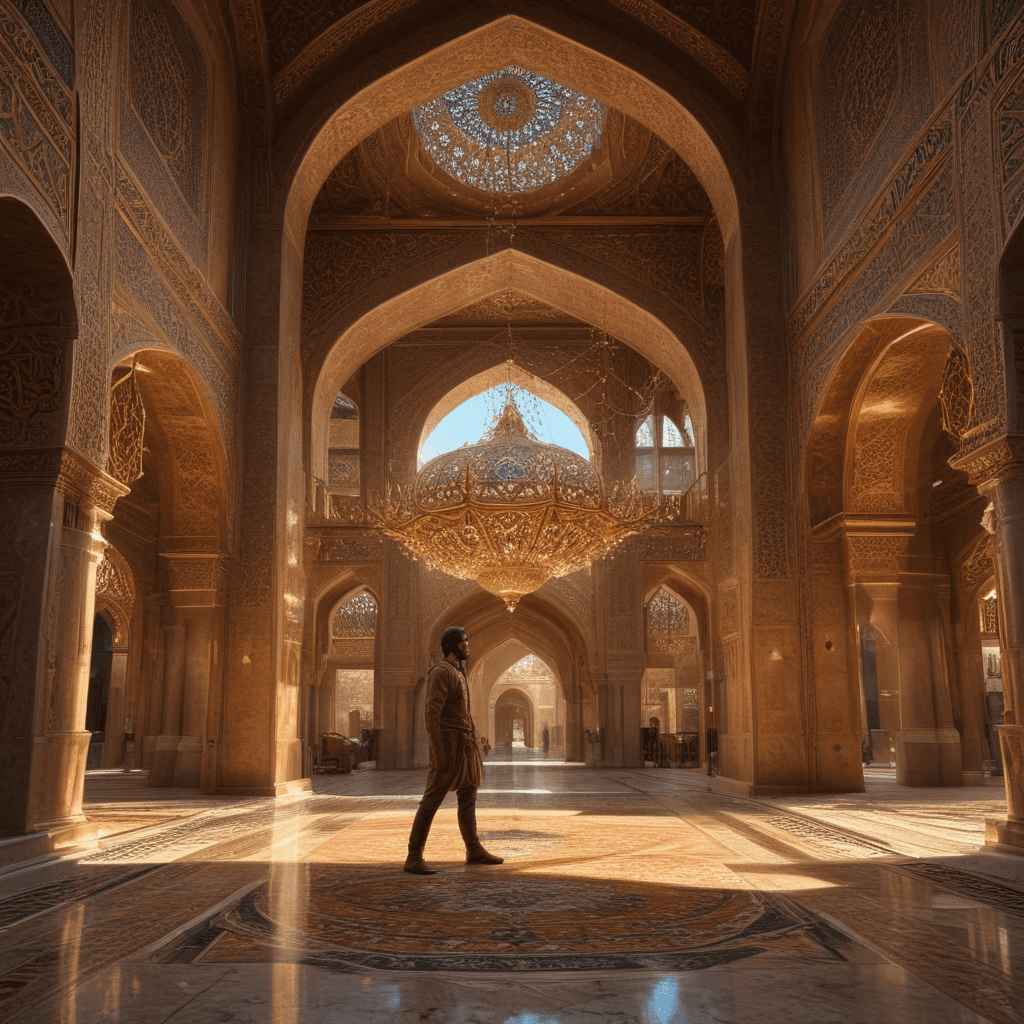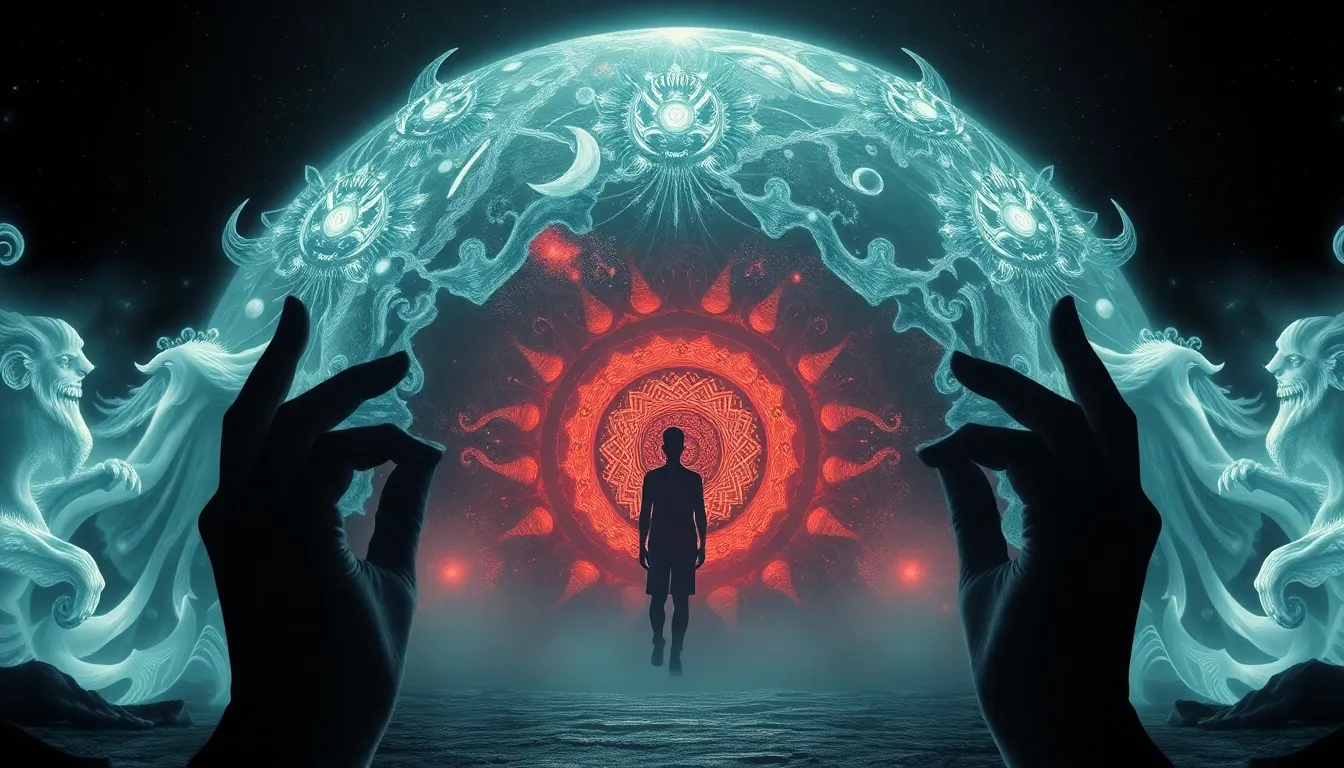Introduction
1. Persian Mythology: A Rich Tapestry of Stories and Beliefs
Persian mythology, with its roots stretching back millennia, boasts a vibrant tapestry of stories, beliefs, and characters that have captivated generations. From the epic tales of the Shahnameh to the captivating narratives of Zoroastrianism, Persian mythology offers a wealth of insights into the cultural and spiritual landscape of ancient Persia.
This rich mythological tradition served as the bedrock of Persian culture, shaping its art, literature, and social values. The arrival of Islam in the 7th century CE marked a significant turning point in Persian history, introducing a new religious framework and worldview. However, the influence of Persian mythology did not simply vanish. Instead, it underwent a fascinating process of adaptation and integration, leaving an enduring mark on Islamic culture in Persia and beyond.
2. Pre-Islamic Persian Beliefs and Mythology
Zoroastrianism, founded by the prophet Zoroaster, held sway as the dominant religion in Persia before the advent of Islam. This ancient faith presented a complex and nuanced cosmology, centered around the belief in a supreme deity, Ahura Mazda, locked in an eternal struggle against the forces of evil embodied by Angra Mainyu.
Zoroastrianism emphasized the importance of free will, moral choice, and the ultimate triumph of good over evil. These central tenets resonated deeply within Persian society, finding expression in the myths and legends that flourished during this era. The Shahnameh, a monumental epic poem attributed to the poet Ferdowsi, stands as a testament to the richness of Persian mythology. This sprawling narrative weaves together tales of heroes, kings, and mythical creatures, offering a captivating glimpse into the values, beliefs, and aspirations of pre-Islamic Persia.
3. The Arrival of Islam and its Impact on Persian Culture
The arrival of Islam in Persia marked a watershed moment in the region's history. As the new faith spread, it gradually gained widespread acceptance among the population. However, the transition was not without its challenges. Initial resistance to Islamic rule gave way to a process of cultural integration, where elements of Persian heritage were skillfully adapted and incorporated into Islamic practices.
Prominent figures like Abu Muslim al-Khorasani, a key figure in the Abbasid Revolution, played a crucial role in bridging the gap between the two cultures. The Abbasid caliphs, who ruled over a vast Islamic empire, actively promoted the translation of Persian literary works into Arabic, fostering a vibrant exchange of ideas and knowledge. This cross-cultural fertilization gave rise to a unique blend of Islamic and Persian elements, enriching both traditions.
4. Syncretism and the Blending of Mythological Elements
The fusion of Persian and Islamic beliefs resulted in a fascinating phenomenon known as syncretism. This process involved the merging of elements from both traditions, creating a new and hybrid cultural expression. Through syncretism, mythological figures and narratives from both Persian and Islamic sources were reinterpreted and incorporated into Islamic literature, art, and architecture.
For instance, the mythical bird Simurgh, a prominent figure in Persian mythology, found a place within Islamic literature as a symbol of divine guidance and wisdom. Similarly, the heroic deeds of Rostam, a legendary warrior from the Shahnameh, were celebrated in Islamic art and storytelling. Even the figure of Zahhak, a tyrannical ruler in Persian mythology, was reinterpreted within Islamic narratives as a cautionary tale against oppression and injustice.
5. The Shahnameh and its Enduring Influence
The Shahnameh, as a repository of Persian mythology, continues to exert a profound influence on Islamic culture even today. This epic poem, with its timeless themes of heroism, chivalry, and the eternal struggle against tyranny, resonates deeply with audiences across generations. The Shahnameh's impact extends far beyond literature, inspiring countless works of art, music, and even political discourse. Its enduring legacy serves as a testament to the power of storytelling and the enduring influence of Persian mythology on Islamic culture.
6. The Role of Sufism in Bridging Persian and Islamic Traditions
Sufism, a mystical branch of Islam, played a crucial role in bridging Persian and Islamic traditions. Sufi mystics, with their emphasis on inner spirituality and divine love, found resonance in Persian mystical concepts like fana (annihilation of the self) and baqa (abiding in God).
Sufi poets like Rumi and Hafiz drew heavily on Persian imagery and symbolism in their works, expressing profound spiritual truths through evocative metaphors and allegories. Their poetry, infused with the spirit of Persian mythology, reached a vast audience and contributed significantly to the blossoming of Islamic mysticism in Persia.
7. The Influence of Persian Mythology on Islamic Art and Architecture
The influence of Persian mythology extended to the realms of Islamic art and architecture. Mosques, palaces, and other structures were adorned with intricate motifs and patterns inspired by mythical creatures and narratives. The mythical bird Simurgh, symbolizing divine wisdom and guidance, became a popular motif in Islamic art.
Similarly, the stories of heroes like Rostam and the Shahnameh epic provided inspiration for artists and architects, who depicted these narratives on murals, tile work, and decorative elements. These artistic expressions served not only as aesthetic embellishments but also as reminders of the rich cultural heritage and mythical traditions that shaped Islamic culture in Persia.
8. The Shahnameh's Impact on Islamic Literature and Popular Culture
The Shahnameh, with its epic tales of heroism, chivalry, and the struggle against tyranny, has profoundly impacted Islamic literature and popular culture. The poem's characters and narratives have inspired countless works of poetry, prose, and theater throughout the Islamic world.
Moreover, the Shahnameh's influence extends beyond the realm of literature, finding expression in popular culture through storytelling, folklore, and traditional performances. The epic's themes of courage, justice, and the triumph of good over evil continue to resonate with audiences today, ensuring the Shahnameh's enduring legacy in Islamic culture.
9. The Legacy of Persian Mythology in the Modern World
The legacy of Persian mythology continues to shape cultural expressions in the modern world. Contemporary artists, writers, and filmmakers draw inspiration from the rich tapestry of stories and characters found in Persian mythology. The themes of heroism, love, and the struggle against injustice explored in these myths resonate with audiences across cultures and generations.
Moreover, the process of syncretism, which saw the blending of Persian and Islamic traditions, continues to inspire cross-cultural dialogue and understanding in the modern world. By exploring the rich heritage of Persian mythology and its enduring influence on Islamic culture, we gain a deeper appreciation for the complex interplay of beliefs, values, and artistic expressions that shape our world today.
10. Frequently Asked Questions (FAQs)
Q: What are some of the most well-known figures from Persian mythology?
A: Ahura Mazda, Angra Mainyu, Rostam, Simurgh, and Zahhak are among the most well-known figures from Persian mythology.
Q: How did Persian mythology influence Islamic art and architecture?
A: Motifs and patterns inspired by mythical creatures and narratives from Persian mythology were incorporated into the design of mosques, palaces, and other structures.
Q: What is the significance of the Shahnameh in Islamic culture?
A: The Shahnameh, an epic poem containing tales of heroism, chivalry, and the struggle against tyranny, has profoundly impacted Islamic literature, art, and popular culture.
Q: How does Persian mythology continue to influence the modern world?
A: Contemporary artists, writers, and filmmakers draw inspiration from Persian mythology, and the themes of heroism, love, and the struggle against injustice explored in these myths continue to resonate with audiences across cultures and generations.
Q: What is the role of syncretism in understanding the influence of Persian mythology on Islamic culture?
A: Syncretism, the blending of Persian and Islamic traditions, helps us understand how elements from both cultures were adapted and integrated, creating a unique and hybrid cultural expression.



